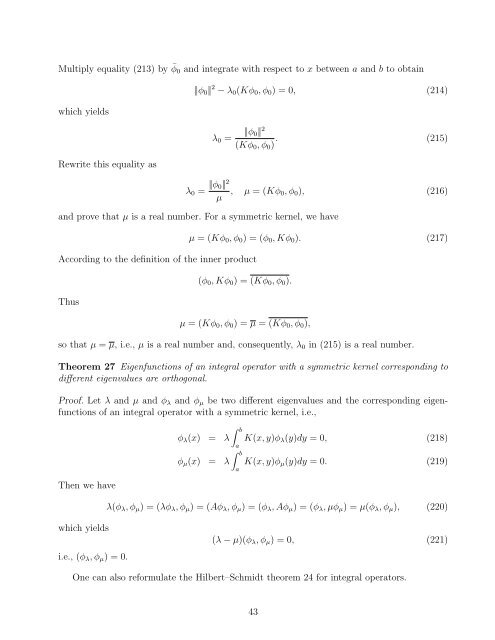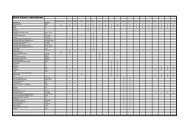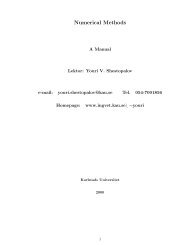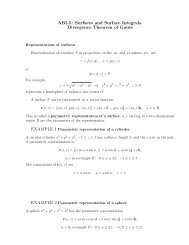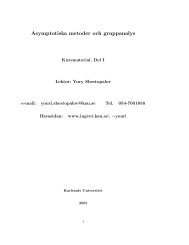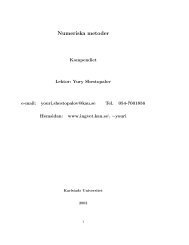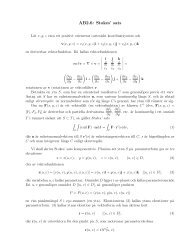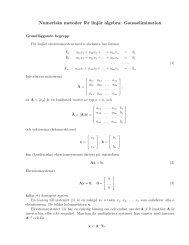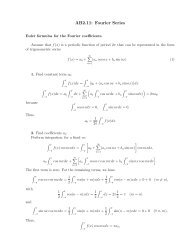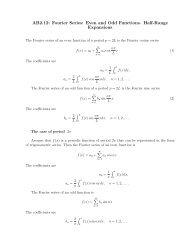You also want an ePaper? Increase the reach of your titles
YUMPU automatically turns print PDFs into web optimized ePapers that Google loves.
Multiply equality (213) by ¯φ 0 and integrate with respect to x between a and b to obtainwhich yieldsRewrite this equality as||φ 0 || 2 − λ 0 (Kφ 0 , φ 0 ) = 0, (214)λ 0 = ||φ 0 | 2(Kφ 0 , φ 0 ) . (215)λ 0 = ||φ 0|| 2µ , µ = (Kφ 0, φ 0 ), (216)and prove that µ is a real number. For a symmetric kernel, we haveAccording to the definition of the inner productThusµ = (Kφ 0 , φ 0 ) = (φ 0 , Kφ 0 ). (217)(φ 0 , Kφ 0 ) = (Kφ 0 , φ 0 ).µ = (Kφ 0 , φ 0 ) = µ = (Kφ 0 , φ 0 ),so that µ = µ, i.e., µ is a real number and, consequently, λ 0 in (215) is a real number.Theorem 27 Eigenfunctions of an integral operator with a symmetric kernel corresponding todifferent eigenvalues are orthogonal.Proof. Let λ and µ and φ λ and φ µ be two different eigenvalues and the corresponding eigenfunctionsof an integral operator with a symmetric kernel, i.e.,Then we have∫ bφ λ (x) = λφ µ (x) = λa∫ baK(x, y)φ λ (y)dy = 0, (218)K(x, y)φ µ (y)dy = 0. (219)λ(φ λ , φ µ ) = (λφ λ , φ µ ) = (Aφ λ , φ µ ) = (φ λ , Aφ µ ) = (φ λ , µφ µ ) = µ(φ λ , φ µ ), (220)which yieldsi.e., (φ λ , φ µ ) = 0.(λ − µ)(φ λ , φ µ ) = 0, (221)One can also reformulate the Hilbert–Schmidt theorem 24 for integral operators.43


